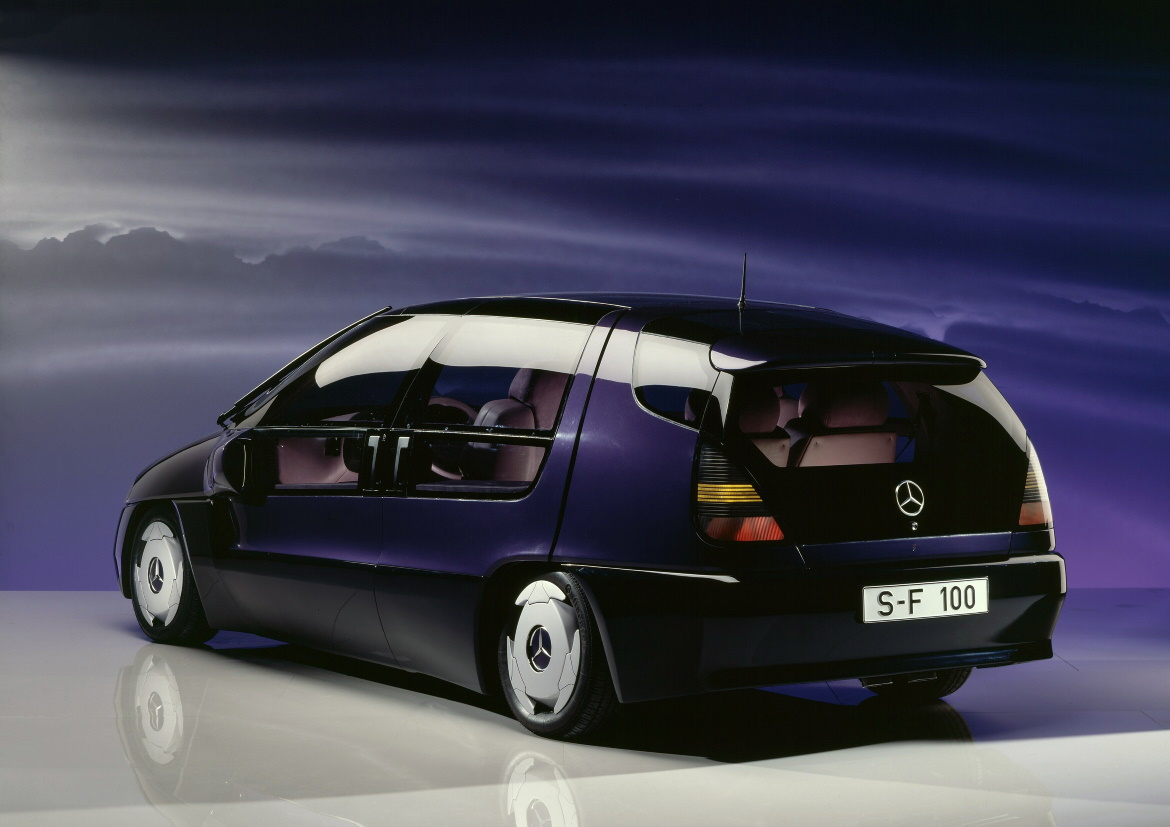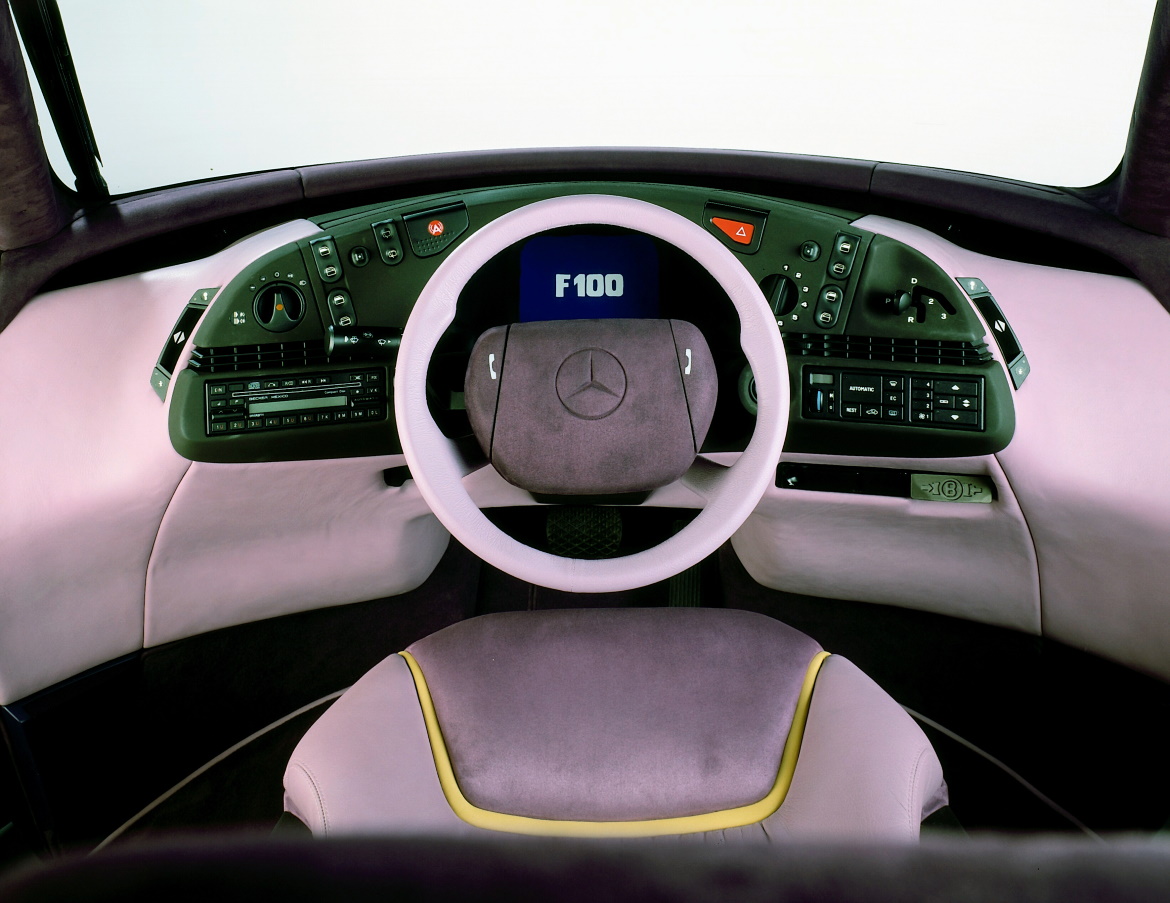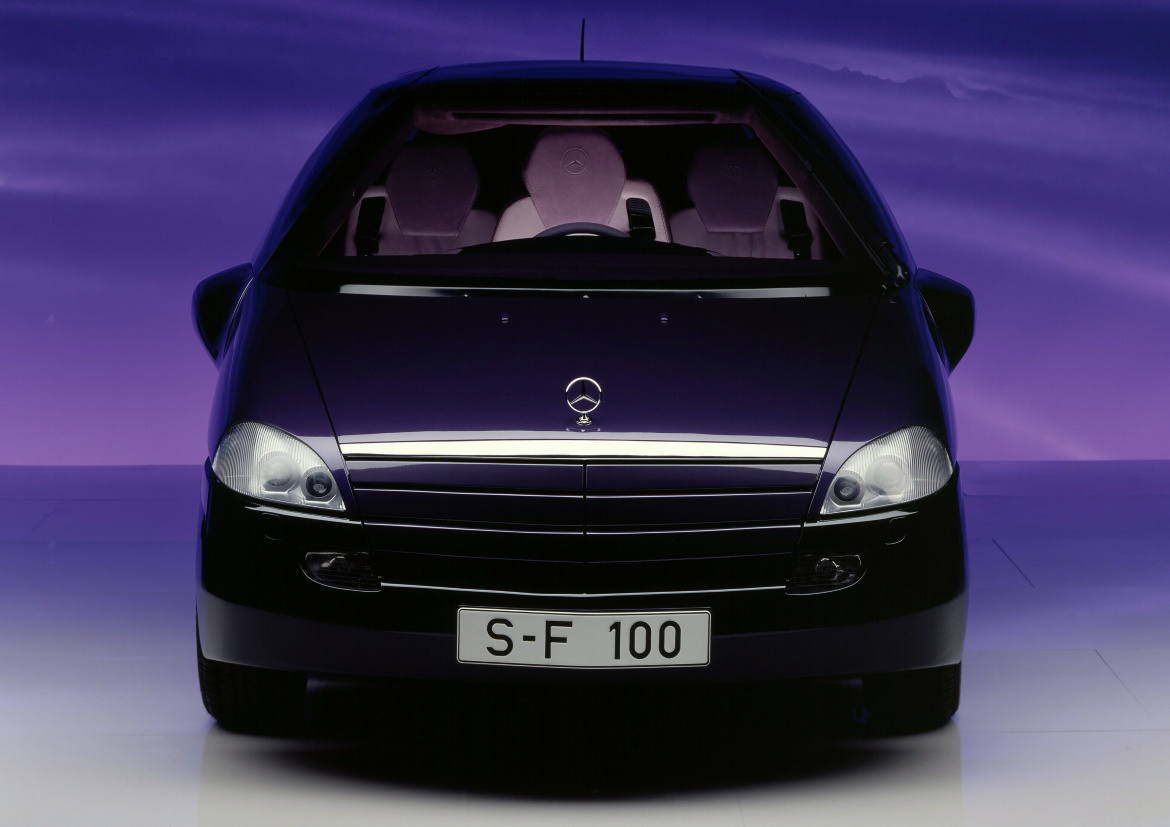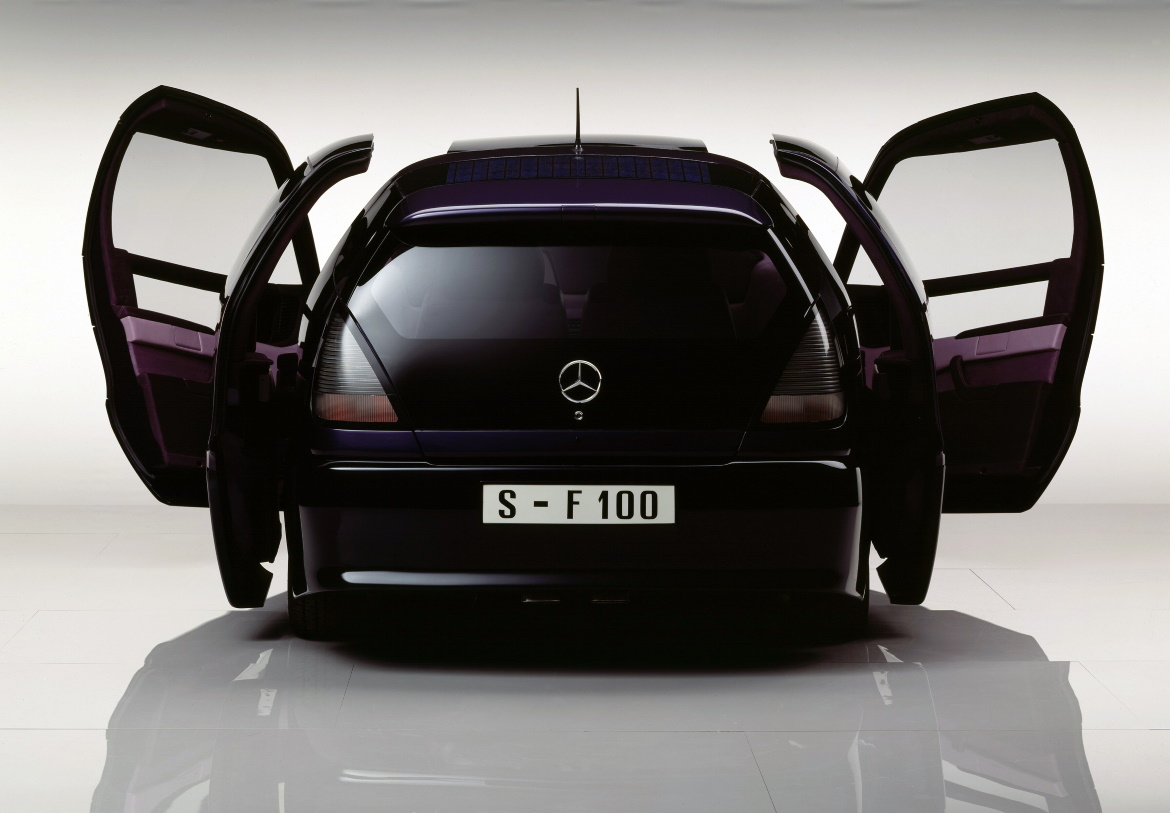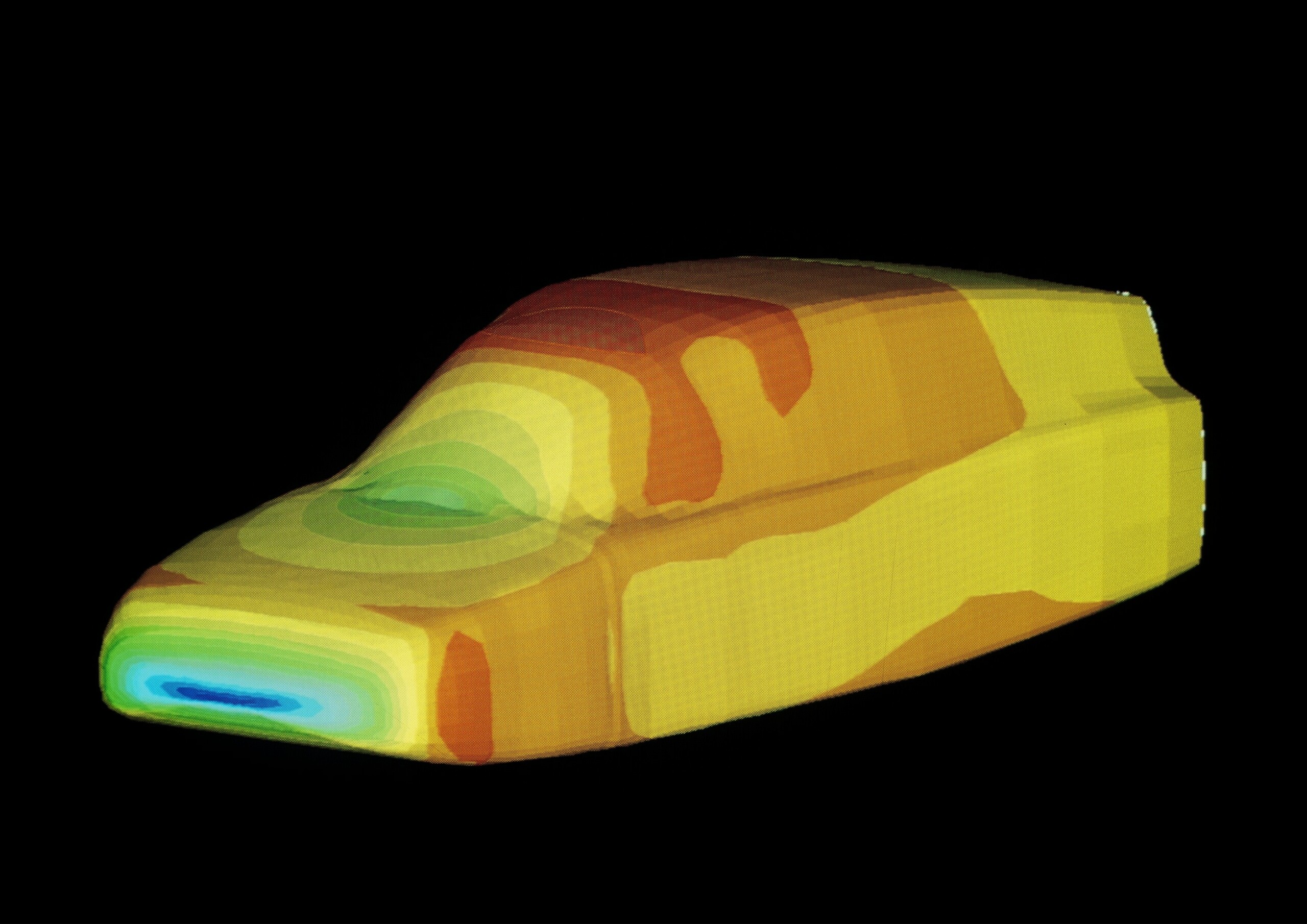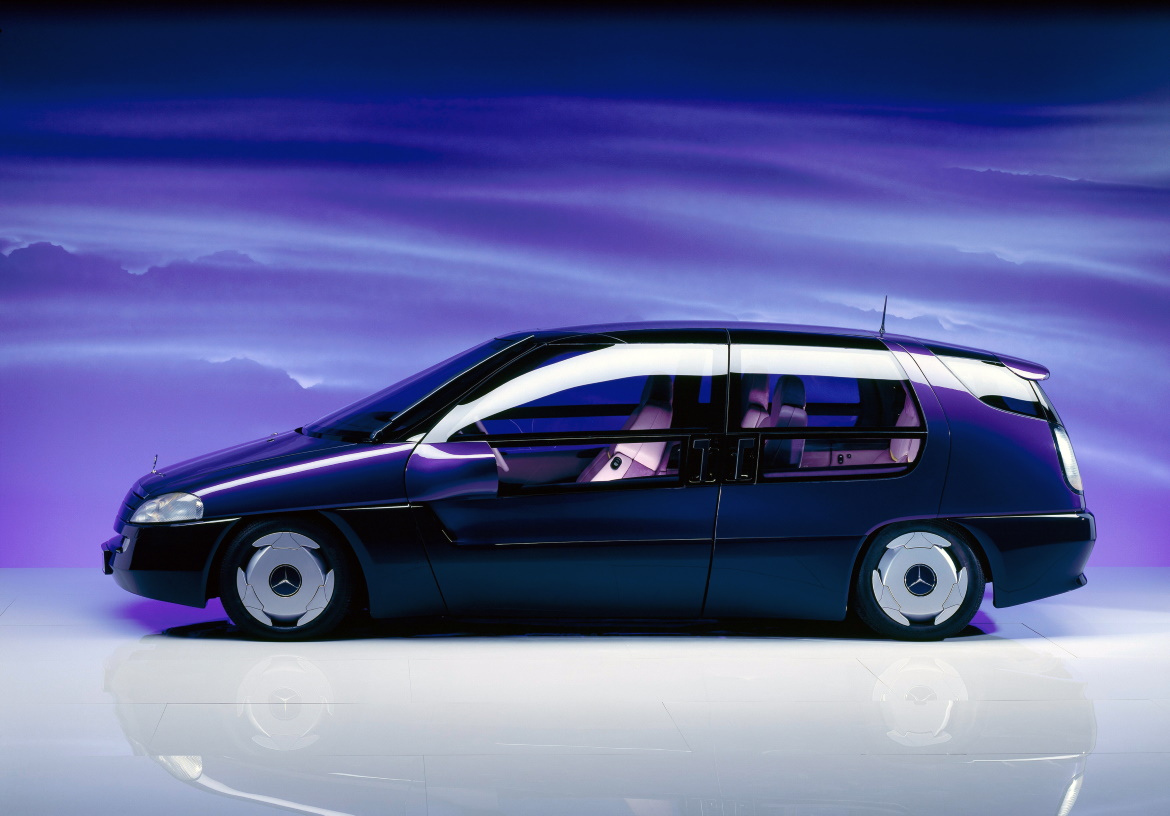30 YEARS OF FUTURE
Looking back, it’s amazing how much the Mercedes-Benz F 100 concept car already in 1991 presented part of the future we live in today: whether it’s telephone control via steering wheel buttons, automatic distance control from other vehicles or electronic tyre pressure monitoring, as well as many attributes of networked vehicles: what seemed utopian three decades ago is now part of the standard equipment of cars and commercial vehicles.
The F 100 concept was presented to the public on 12 January 1991 at the Detroit Motor Show. The engineers and designers incorporated more technology into the F 100 than in any Mercedes Benz research vehicle seen up to that time. Safety and comfort: The F 100 had several innovations when it came to safety and comfort. The engineers and designers showed foresight in terms of how future safety regulations would affect vehicle technology and car design: during the development of the F 100, they took accident research findings into account, but also social ones. The data collected showed that a car only carries an average of 1.2 to 1.7 people in daily traffic. This figure has hardly changed over the decades, so three comfortable seats are more than enough.
Since the driver is always on board, he can count on the safest seat in the F 100 and is therefore seated in the middle of the passenger compartment. To make getting in and out easier there are parts of the floor and roof that open together with the doors. The two passengers sit staggered to the left and right behind the driver. The dashboard has been positioned further away than usual to increase safety in the event of an accident. Roominess is fully exploited, given the lack of B-pillars.
In terms of visibility, the gas-discharge headlights, which came onto the market years later, were used for the first time on a Mercedes. The rear lights, consisting of transparent prisms, can be operated from a central light source. Depending on the function, they illuminate in the corresponding colour. The front windscreen wiper moves across the width of the windscreen and cleans it almost completely, and the sensor located behind the windscreen automatically activates it in the event of rain.



